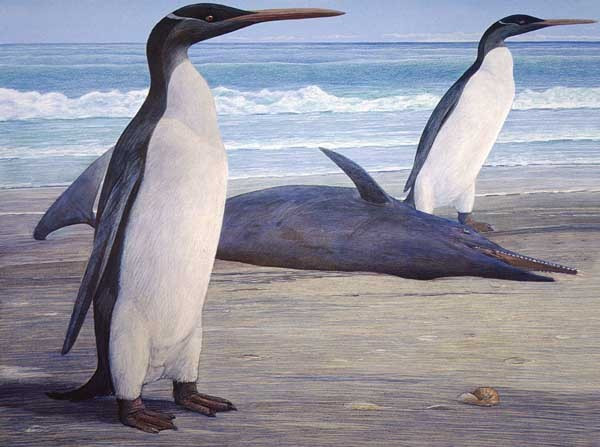Four Feet Tall Giant Penguin Fossil Reconstructed in New Zealand

Researchers have reconstructed the fossil skeleton of a four feet tall giant penguin which lived in New Zealand, nearly 25 million years ago.
The researchers from the North Carolina State University reconstructed the fossil of Kairuku, from two separate fossils, using the skeleton of an existing king penguin as a model.
The scientists found out that Kairuku was an elegant bird by penguin standards with a slender body, long flippers and short and thick legs.
"Kairuku was an elegant bird by penguin standards, with a slender body and long flippers, but short, thick legs and feet," said Dr Dan Ksepka, professor of marine, earth and atmospheric sciences at the North Carolina State University in a statement.
"If we had done a reconstruction by extrapolating from the length of its flippers, it would have stood over 6 feet tall. In reality, Kairuku was around 4-feet-2 inches tall or so. This species gives us a more complete picture of these giant penguins generally, and may help us to determine how great their range was during the Oligocene period," he added.
Kairuku was one of five different species of penguin that lived in New Zealand and the name Kairuku, came from a Maori word which means "diver who returns with food".
Kairuku fossil was discovered by Dr. Ewan Fordyce, a paleontologist from the University of Otago, New Zealand in 1977.
According to the researchers, New Zealand was a safe haven for the penguins in terms of both food and safety.
Most part of the region was under water millions of years ago, leaving isolated, rocky land masses that kept the penguins safe from potential predators and provided them plenty of food supply.
Researchers believe that the reconstruction of Kairuku will give paleontologists more information about the other fossils found in the area and more knowledge about giant penguin species.
© Copyright IBTimes 2025. All rights reserved.





















